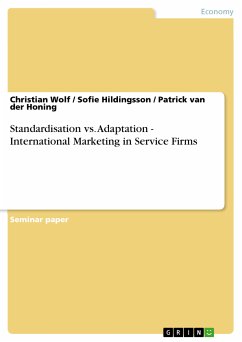Master's Thesis from the year 2006 in the subject Business economics - Offline Marketing and Online Marketing, grade: 1,7, University of Hamburg, language: English, abstract: Over the last decades, an increasing number of companies have begun to recognize that their brands are the most real and marketable assets they have developed and thus are a source of competitive advantage (e.g. Aaker 1990, p. 47; Kapferer 2004, p. 233). Through the establishment of brands and brand images, the positioning and diversification of own products towards competitors' products is supported and an additional value which goes beyond the mere technical-physical characteristics is created (e.g. Keller 1993, p. 2). The capitalization of this brand value through a brand extension strategy defined as "the use of established brand names to enter new product categories or classes" (Keller & Aaker 1992, p. 35) has become the preferred alternative for growth and a guiding strategy for product planners (e.g. Tauber 1988). Thereby, a company uses the equity built up in the names of existing brands, for example to improve the likelihood of new product success or to enhance marketing productivity (Rangaswamy & Burke & Oliva 1993, p. 61). The latter has especially gained importance due to a dramatic rise in costs for introducing new products. Especially advertising expenses have exploded due to the information overflow of consumers and the increasing number of products struggling for their attention. In practice, brand extensions have therefore been the core of strategic growth for a variety of companies. Especially in the last two decades, a strong tendency towards the brand extension strategy has shown compared to the new brand strategy. Whereas in the USA until 1984, the share of extension products in total new product introductions in the fast-moving consumers goods segment was only 40% (Aaker & Keller 1990, p. 27), the share amounted to 90% in 1991 (Rangaswamy & Burke & Oliva 1993). Some brand-owners likeProcter & Gambleeven launched their new products exclusively under established brand names in a period of time (from 1992-1994) (Zatloukal 2002, p. 3). While there have been several successful examples such as the extension of Boss(clothing) to Bossperfumes orCamel(cigarettes) to outdoor clothing, there have also been significant marketplace failures such asHarley Davidsonwine coolers (Aaker 1990; Keller 1998) orLevistailored suits. According to a study by Ernst & Young and Nielsen (1999), there has been an astounding 84% failure rate among brand extensions in some categories.
Dieser Download kann aus rechtlichen Gründen nur mit Rechnungsadresse in A, B, BG, CY, CZ, D, DK, EW, E, FIN, F, GR, HR, H, IRL, I, LT, L, LR, M, NL, PL, P, R, S, SLO, SK ausgeliefert werden.









